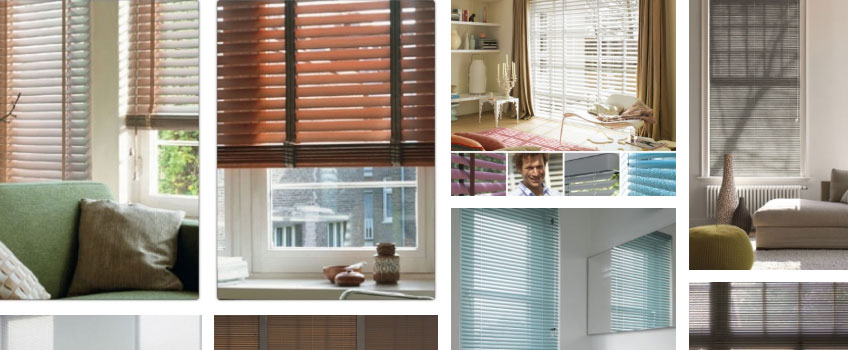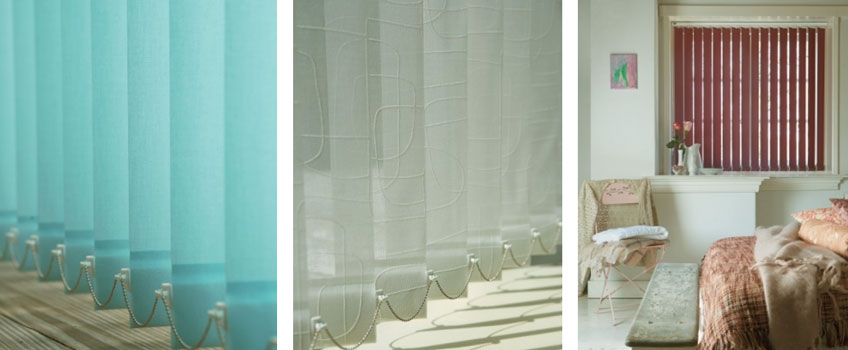Roller Blinds
Position your brackets in place, mark out the holes, and then use a drill to screw the brackets into place. Identify your control bracket before trying to fit any of the brackets, ensuring it’s on the right side, then drill until one screw is almost tight.

Realign your bracket, drill in the other screws, and tighten all screws. Repeat this process with the other bracket.
Wind up your blind, find the idle pin end, and slide it into the bracket, then take the control end and push into the control bracket until it clicks into place. Check to see if the blind is working.
Wooden Blinds
In the process of fitting wooden blinds, position the brackets, and mark the holes. Drill one screw in, and stop before it’s tight.
Push the bracket back if moved, then drill in the other screws, and tighten them all up. Repeat on the other bracket.

Pick up the headrail and take off the end caps. Face the velcro towards you and put the headrail into the brackets. Push the headrail down, and snap the hinges shut. Remove the plastic from the velcro, and then slide the fascia over the headrail’s front, making sure it covers the headrail. Fit your safety device and ensure it’s working.
Venetian Blinds
To fit venetian blinds, start by position brackets and ensuring they’re level. Mark out holes then drill in the brackets using screws, but stop before the screws are tight.

Push the bracket into place, then drill in the second screw, and tighten them both up. Repeat this process for the next bracket.
Pull your blind up, find the swing arm and push anti clockwise until it’ll move no more. Lift the blind, and then clip it over the bracket. Push the swing arm back the other way until it locks. Release your blinds to ensure they hang smoothly, and test by lifting and extending. Then hook up your safety device.
Vertical Blinds
Take brackets and mark out screw holes where you want your blinds to hand. Drill over the markings to create holes, then position the brackets and screw them fully into place.

Position the control mechanism on the side you want it. Then tilt the rail and hold up to the brackets. Push the rail into place until you hear it click. Secure the rail by tightening the screws on the bracket fronts.
Take the fabric slats so the metal circle is at the top. Hook this from the first slat onto the first traveller, then repeat this process on all of the slats, until the blind is hung. Then hook up your safety device.
Roman Blinds
Place brackets where the blind will hand, and ensure everything is level. Mark out the positions of the holes where your screws need to go.
Start with one side of the bracket and place over the markings, drill in one screw, and be sure to stop before this screw is tight.

Push the bracket back into place if need be, then drill the second screw all the way in. Go back and tighten the previous screw. Repeat this process on all sides where brackets will go.
Tip the head rail 45 degrees. Use this angle to hook the clips into the brackets, starting at the top. Once hooked, push until it clicks into place.
UPVC Blinds
Place the brackets first where you want your blinds to hang. Then mark out the holes where the screws need to be applied to the bracket.
Using a drill, create the holes over the markings. Then drill in one side of the bracket, and be sure to stop before the screw is tight.
Push the bracket back into place so you can see the other marking, and then drill in another screw. Then ensure both screws are tight, and move on to repeat this process on the other side of the bracket.
Once both are secured, clip in your blinds. Take some time to test the mechanism, and if it works, you’re all done.
Skylight Blinds
To fit skylight blinds, start by peeling off the adhesive from the head cassette, and then fix it into the frame of the skylight itself. Find the ready to use holes on either side to drill screws in to secure the blinds in place.
Grab the fabric and pull it through the right side channels, then do the same on the left side. Ensure the material is level on either side and to your liking.
Then push the rails toward the skylight itself, ensuring they are level and close to the skylight.
If you’re happy with the placement, find the ready to use holes of the bottom rail and screw the skylight blinds in.
Shutters
In order to fit shutter blinds, you’ll need to determine if you’re working with L frames or Z frames. In general, be sure to lay out the contents of the shutters on the floor first and read the labels.
Slide the corners together if need be, and mark the screw holes on each side. Then, drill all necessary screws into place and lift the frame into place against the window. Once the frame is in position, close the vanes upwards and position the panels into place.
Mark screw holes again, remove panels, and then screw the frame into the wall. Put panels back and hold in place with hinges. Then tighten all panel screws.
You Need a Professional
Fitting blinds can be a lengthy and complicated job, and the fitting blind cost can vary depending on what kind of blinds you want in your household. Working with a professional is a great way around these big expenses and any time consuming efforts.
As you can see from the details above, there can be a lot of variance in the job required to fit a pair of blinds to a window, so do what’s best for your household, and hire a professional to take care of your blind options for you.



